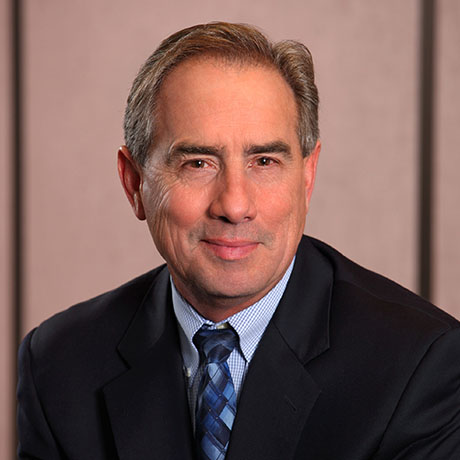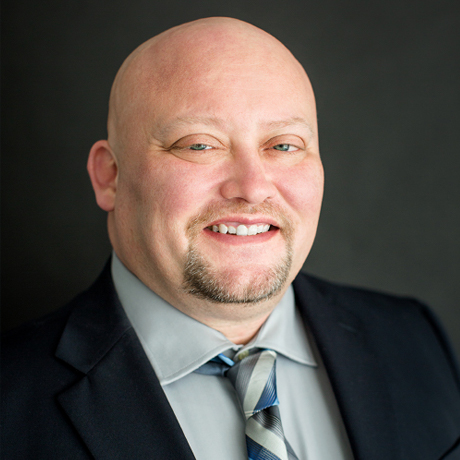How to Get Started with a Plan for Retirement
How does the sale of your dental practice fit into your retirement plan? Kevin Brady, Certified Broker at OMNI, explains how to get started to best maximize the value of your practice.
Exit Planning in the COVID Era
Are you ready to transition?
Is your practice ready to transition?
What is the market like?
These are all key questions to ask yourself. When is a good time to start thinking about all of this? The real answer is as soon as you buy or start your practice, but the more practical answer is dependent on you. If there any chance you will want to transition in the next five years, you should start working on your transition today.
Personal readiness and practice readiness are both more important than current market conditions; however, considering the COVID crisis, I am going to focus on market timing.
If any of the following sounds even slightly familiar, raise your hand:
I was ready personally, and my practice was ready in August 2019. I choose to wait because (pick one or more):
- I have a kid with one year left in college
- I have one year until I can draw Medicare
- There is one more room in the house I would like to finish
- My spouse retires in a year
- I pay off my house in a year
- I turn (insert round number like 60 or 70) next year and I would like to wait until then
- Etc. …
Now, for those of you that raised your hand, consider the reality of August 2020. How does that August 2019 decision to wait look? Questionable at best.
My intent is not to beat up on those of you that this struck a chord. Rather, I want to emphasize the need for starting early and getting help.
Transitioning is a difficult process. Do not go it alone. Contact an experienced, qualified transition specialist and get the ball rolling. We are here to help.
Do you have more questions? Attend our Practice Transition webinar on Thursday, 10/1 at 6pm ET/ 3pm PT, presented by Corey Young, DDS, MBA, and Katie Collins, CFP. Reserve your spot today at omni-pg.com/register.
Read MoreThe 4 P’s of Your Dental Practice: Performance, Productivity, Profitability, and Patients


All dentists want a practice with high performance, productivity, and profitability. These three P’s represent the standard by which successful dental practices are measured. There is, however, another “P” that many dentists forget, which is arguably the most important – Patients.
Happy patients lead to positive outcomes and accelerate the other Ps. Enhancing customer service and public relations are vital to running a thriving dental practice. To accomplish this requires dentists to devote more time to patients and provide them with what they need to complete their treatment recommendations. By incorporating current, proven, safe, and secure technology into the dental practice, staff can focus more on patient care.
Performance indicators The recall program is the performance enhancement engine of most dental practices. When patients commit to and show up for regular recall appointments, dentists can diagnose potential issues early. These appointments allow time for patients to express their concerns and discuss what needs to be addressed with their teeth. In order to have an effective recall program, the practice needs a good hygiene program to encourage patients to return at six-month intervals. This means the practice has enough staff to see both recall patients and those coming in for more time-consuming dental treatment.
If the one-on-one time with the staff decreases, performance may suffer, and patients may become uneasy about accepting the recommended treatment that was not effectively explained to them. Enhancing patient communication internally and externally during this pandemic time will help to ease patient fears and build trust with being treated at the practice.
Productivity indicators A full patient schedule, along with healthy collections, is indicative of high productivity. In fact, according to the ADA’s Practical Guide to Expert Business Strategies, “Controlling the schedule requires constant vigilance, commitment, and training. It is the foundation for the success of the entire practice. (Ref 1) It takes valuable staff time to maintain this schedule and work with patients and insurance companies to collect payment. When staff is concentrating on reminding patients about appointments, preparing monthly invoices, and communicating with insurance companies, they are not focused on patient treatment and business-building tasks.
Here are several signs that the practice is busy, but not productive:
- The main objective is to keep the schedule full rather than focused on patient care.
- Both the hygiene and dentist schedules are booked for weeks or even months, forcing patients to wait long periods of time for even routine procedures.
- There is no consistency in the procedure schedule—patients are booked for 30, 60, or even 90 minutes.
- Staff skips lunch breaks to catch up.
- There is low patient retention.
- Revenues are flat. (Ref 1)
Using or adding technology can help staff maintain a full patient schedule through automated email, text, mail, and phone call reminders to help patients with their appointments. These software programs also provide practices with essential statistics, such as appointed and completed versus missed appointments, to increase productivity.
Another productivity indicator is the number of patient referrals. Satisfied patients refer others to the practice. Happy patients believe the staff truly cares about their dental care and goes the extra mile explaining treatment options. Happy patients = more referrals! (Ref 1)
Poor performing dental practices experience a myriad of problems. For instance, there may be staff issues that lead to high turnover. High turnover results in reduced efficiencies within the practice since dentists spend more time training new employees and less time with their patients. Patients notice the constant staff changes and increased waiting time.
To have a high performing, productive, and profitable dental practice, focus on the fourth “P”—patients. The solution is having your staff focus on practice building work and less time on busywork that can be automated.
Omni Practice Group has been helping dentists for over 15 years to maximize the value of the practice and provide smooth transitions for dentists as they retire.
References 1. American Dental Association (ADA). The ADA Practical Guide to Expert Business Strategies: Advice from Top Dental Consultants. 2014.
Read MoreBiggest Decisions Dentists Will Have to Make


As a dentist, you worked hard to build a successful dental practice. This has often meant putting in long hours, dealing with staff turnover, insurance hassles, ongoing CE requirements, and economic issues. Everything about the practice has been on your shoulders, along with having a good life balance outside the practice. Then comes that day when you want to transition the practice and retire.
Transitioning the practice is probably one of the biggest decisions a dentist will make in their career. Deciding on whether to transition the practice to a partner, associate, a new dentist, or corporate dentistry, you will need expert help to make the right decision.
Developing a plan
Having a plan that is 6-8 years out from transitioning the practice will allow you to maximize the fruits of your labor. Most dentists should consult experienced and reputable practice transition advisors who specialize in dental practice transactions. Having the practice transition consultant explain the practice valuation process can show you your practice’s true worth. This will allow you to develop a plan that meets with your goals of when you want to transition the practice and what you want the practice to be worth. This will allow the practice transition consultant to advise you on possible strategies to maintain or increase the value of the practice, ensuring that your practice is ready to transition when you are. Many dentists wait “too long” to develop a plan and make decisions to slow down as they get closer to a retirement date or they may add new overhead or make other business decisions that could have a huge negative impact on the value of the practice.
Consider all possible options
Developing a plan early will allow you to compare different possible options to transition the practice. Explore all the different options with your practice transition advisor and pick the one that is right for you and your professional reputation and legacy.
Finding the right buyer
Finding the right buyer that is financially qualified to buy the practice is the most important process of the transition process. Working with your practice transition advisor and their banking partners will allow you to identify the most qualified candidates to negotiate a final deal. Using an expert practice transition advisor will help to maximize the value of your practice and make for a smooth transition.
Finalizing the deal
Once you have a qualified buyer and an offer for the practice, the offer must be reviewed with your attorney and accountant before you accept to make sure that you are protected and know the tax implication of the sale. This will provide you with expert guidance that all your personal financial affairs are in order and you are sufficiently funded for your retirement.
Transitioning of the practice
Developing a transition plan with your transition practice advisor and the new buyer is critical for a smooth transition. A plan must be in place to ensure patients and staff retention. Most dental practice transitions require a transition time commitment from the seller. Make sure you work with your transition practice advisor to identify a time commitment that fits with your exit time frames. This transition time frame is an essential process in providing the buyer with a comprehensive understanding of the day to day operations of your practice.
Practice Transitions Buying or Selling a practice
If you are thinking about transitioning your practice now or within 8 years, you should seek professional help. Selling or buying a practice can have complex processes and numerous legal, financial, and tax implications.
OMNI Practice Group is one of the experts in the industry helping dentists for over 15 years, with developing plans for adding associates, developing transition plans, and selling or buying a dental practice and real estate.
Omni provides:
- Practice Appraisals
- Web Practice Listing Services
- Marketing and Listing services
- Practice Real Estate and Lease services
- Banking Referral Options
Patients seek out their dentist professionals for help when they need it, dentists should also seek out the use of experts in assisting them with all their transitioning needs.
Contact us today for a no-obligation consultation with one of our expert Practice Transition Advisors.
Click here to connect with Kevin on LinkedIn!
Read MoreAre Solo Practice Owners Going the Way of the Golden Toad?
When I talk about corporate practices, I’m primarily speaking of the non-dentist owned corporate practice. There are dentist owned practices where a licensed dentist owns 3, 5 or more practices. He or she has full and legal ownership of their practices. I call these small group practices. Corporate practices tip-toe down the legal sidelines of practice ownership by having a dentist own the clinical aspect of the practice, called Dental Services Organization (DSO) and the non-licensed dentist corporation owns the non-dental management aspects, called a Management Services Organization (MSO). Note that this structure can also occur in small groups, but in the small group, a licensed dentist owns both the MSO and DSO. The large corporates include Aspen, Gentle Dental, Pacific Dental Services and others. Both solo practices and corporate practices have their pros and cons from both a patient perspective and from a dentist perspective.
As a patient, I prefer to know who my dentist is going to be when I go into the office. I want to build a relationship with him or her and want my dentist to know the history of my dental care — and a little bit about me as well. In a corporation, you might get the same dentist the next time you go in, but there’s a good chance it will be a different dentist. Small groups lean more towards a solo practice and you will have a reasonably good chance to get the same dentist in the well run small groups.
From a dentist perspective, most dentists do not want to be told what treatment to focus on, what supplies to use, etc., The majority of dentists surveyed by the ADA still have a dream of owning their own practice, being their own boss, making their own decisions.
Recent court decisions in New Jersey, Allstate vs. Northfield, sided on the side of dentists. It may begin to set the tone to start scaring away the non-dentist corporate owners. Washington State has been trying to pass a bill to allow non-dentist owners and so far has been successful. If you’d like to read an article on the New Jersey case, you can read it here.
So, if you have been holding off on not buying a practice because corporates are going to drive solo practices away, think again. There will always be a need and demand for a solo practice. Court cases like Allstate vs. Northfield will help ensure non-dentist owned practices stay away. Join the practice ownership club today!

